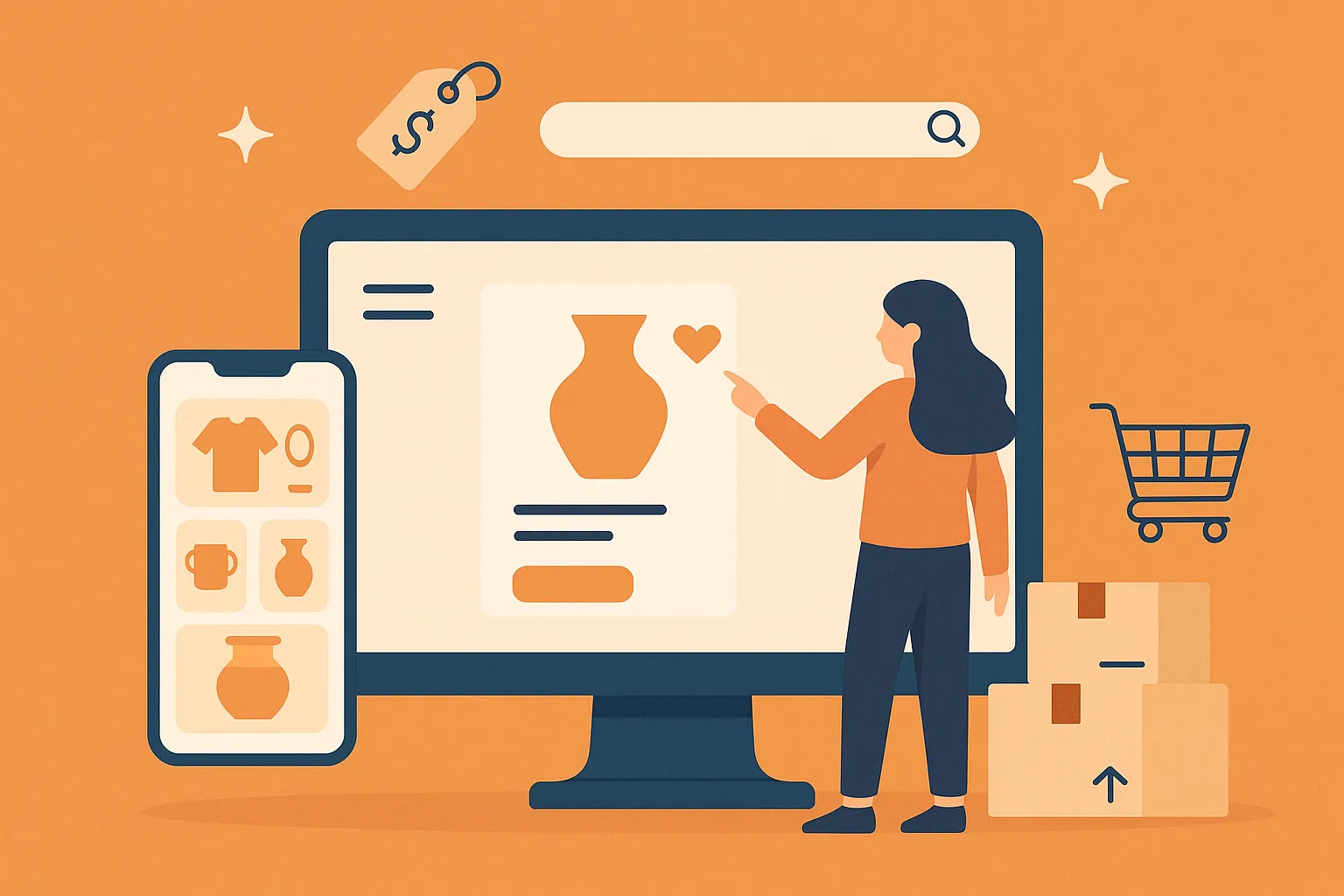Ever had a lightbulb moment while scrolling Etsy at midnight, thinking, “Wait, I could totally build this… but better?” If you’re an entrepreneur, a startup founder, or just a side-hustle dreamer who’s tired of Etsy’s fees and rules, you’re not alone. Thousands of digital creators are feeling boxed in, craving more control, better branding, and higher profits.
Etsy might have started as a cozy nook for handmade crafts, but today it’s a behemoth marketplace — bustling with digital downloads, vintage gems, and indie creators trying to stand out in a noisy crowd. With over 96.3 million active buyers as of 2024 (Statista), it’s got the traffic. But the question is — does it still offer sellers the freedom they crave?
That’s where building your own Etsy-like platform comes in. Whether you’re looking to launch a niche marketplace for local artisans or create a full-blown global storefront rival, knowing what makes Etsy tick is the first step. And hey, if you’re thinking clone development, Miracuves is the one quietly powering the revolution.
Read more: What is Etsy App and How Does It Work?
Why Etsy Works: Breaking Down Its Secret Sauce
Before you get busy sketching wireframes, you need to understand why Etsy doesn’t just survive—it thrives. Let’s peel back the layers.
1. Intuitive Storefront Creation for Sellers
Etsy makes it dead simple for even the least tech-savvy seller to set up shop. A few clicks, a sprinkle of branding, and voilà — you’re in business.
Key elements:
- Drag-and-drop product uploader
- Editable banner, shop bio, and policies
- Inventory and order dashboard
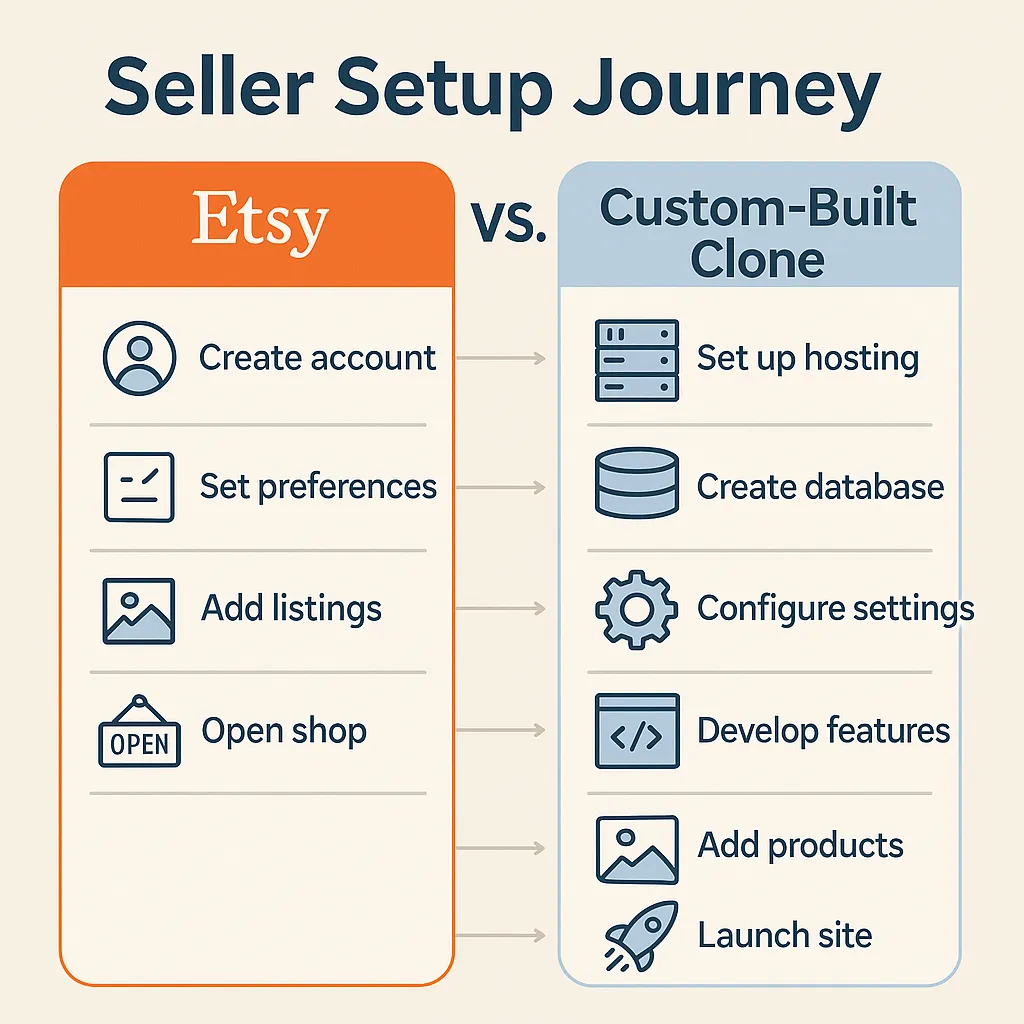
2. Hyper-Personalized Search & Discovery
Etsy doesn’t just show you what’s popular — it shows you what’s perfect for you. Thanks to NLP-powered search, dynamic filters, and taste-based recommendations, shoppers find what they didn’t know they needed.
Related features to include in your clone:
- AI search auto-suggestions
- Filter by handmade, vintage, custom, location, and price
- Category deep-linking with user behavior cues
3. Robust Product Pages That Convert
Every product page on Etsy feels like a mini website: compelling images, SEO-friendly titles, social proof galore.
Included must-haves:
- High-res image carousel
- Product videos
- Custom shipping and personalization options
- Star ratings and review breakdowns
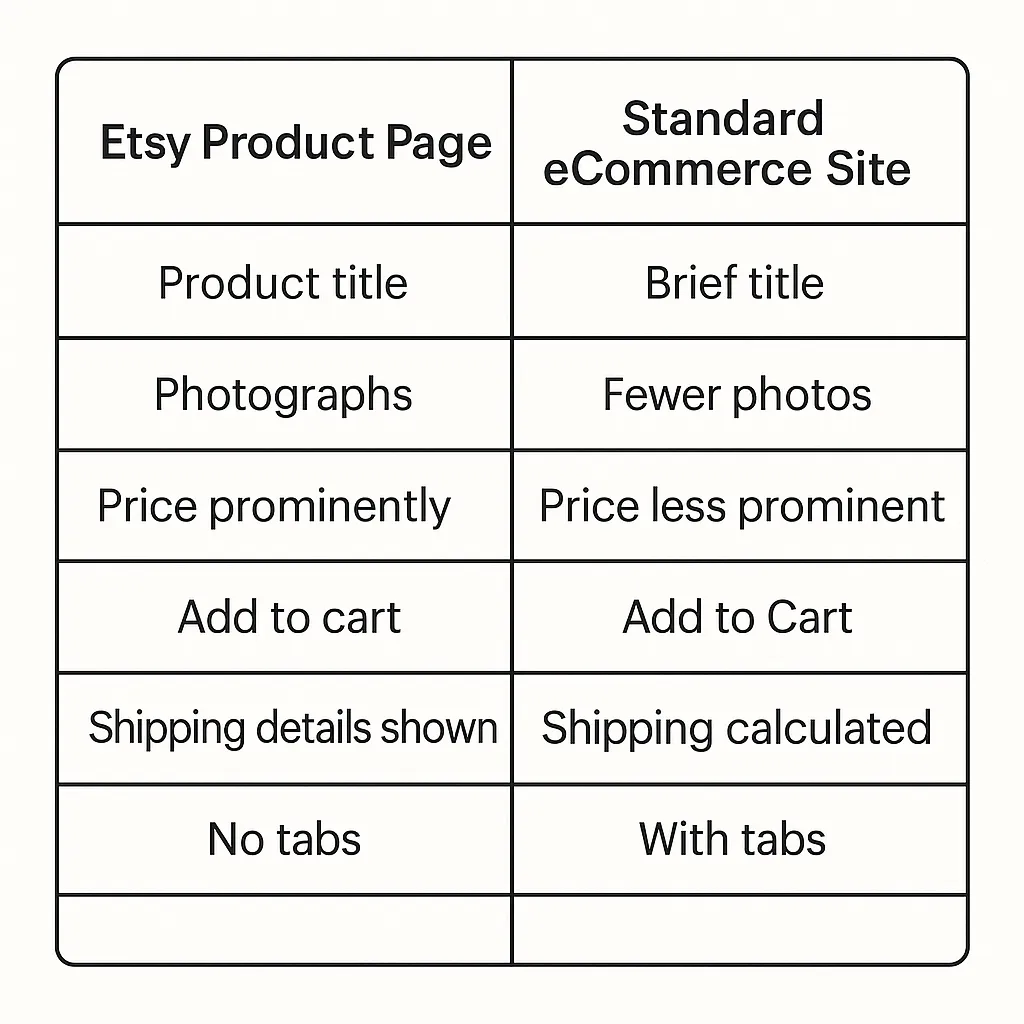
4. Secure, Simplified Payments
Etsy Payments supports multiple currencies and payment methods — making international selling a breeze.
Clone-worthy modules:
- Stripe & PayPal integration
- Escrow-based payment holding (for dispute safety)
- Automatic tax/VAT handling by location
Essential Etsy Features You Need to Clone (No Fluff)
Let’s now dive into the real checklist — the meat and potatoes of Etsy’s MVP (minimum viable product).
1. Multi-Vendor Architecture
Every seller has their own dashboard, storefront, and order manager. This isn’t your average Shopify store — it’s a full-blown marketplace.
Features breakdown:
- Vendor registration + KYC
- Unique URLs for shops
- Admin-level approval system
2. Favorites, Wishlists & Follows
You can heart a product, follow a shop, or save an entire search. That’s Etsy’s way of keeping people emotionally engaged.
Add push notifications for price drops or restocks — dopamine hits keep people coming back.
3. Promotions & Ads Engine
Etsy lets sellers run off-site ads, boost listings, and offer coupons.
Clone-able version includes:
- Sponsored product placements
- Discount engine with expiry
- Analytics dashboard for sellers
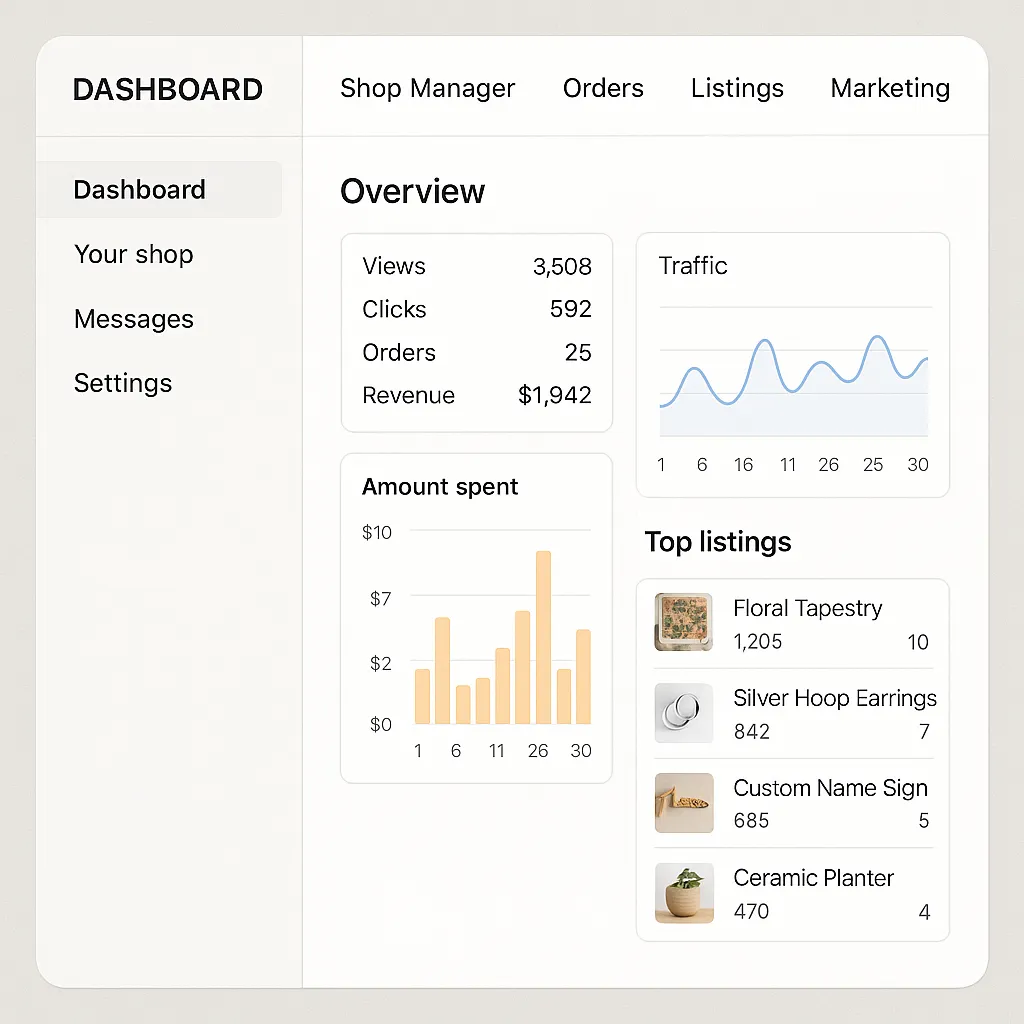
4. In-App Messaging System
Buyers and sellers talk in-app, track messages, and even negotiate personalization.
Must include:
- Threaded chat with attachments
- Response time badges
- Auto-responders for FAQs
Advanced Etsy Features for a Competitive Edge
If you’re not just cloning but upgrading, here’s what to add to outperform Etsy in 2025.
1. AI-Powered Listing Assistant
Auto-suggest keywords, generate product titles, and flag bad photos. AI does the heavy lifting for time-crunched creators.
2. Mobile-First UX with Progressive Web App (PWA)
Etsy’s mobile app is clean, fast, and doesn’t eat data. Your version? Needs to work offline, load instantly, and support gestures.
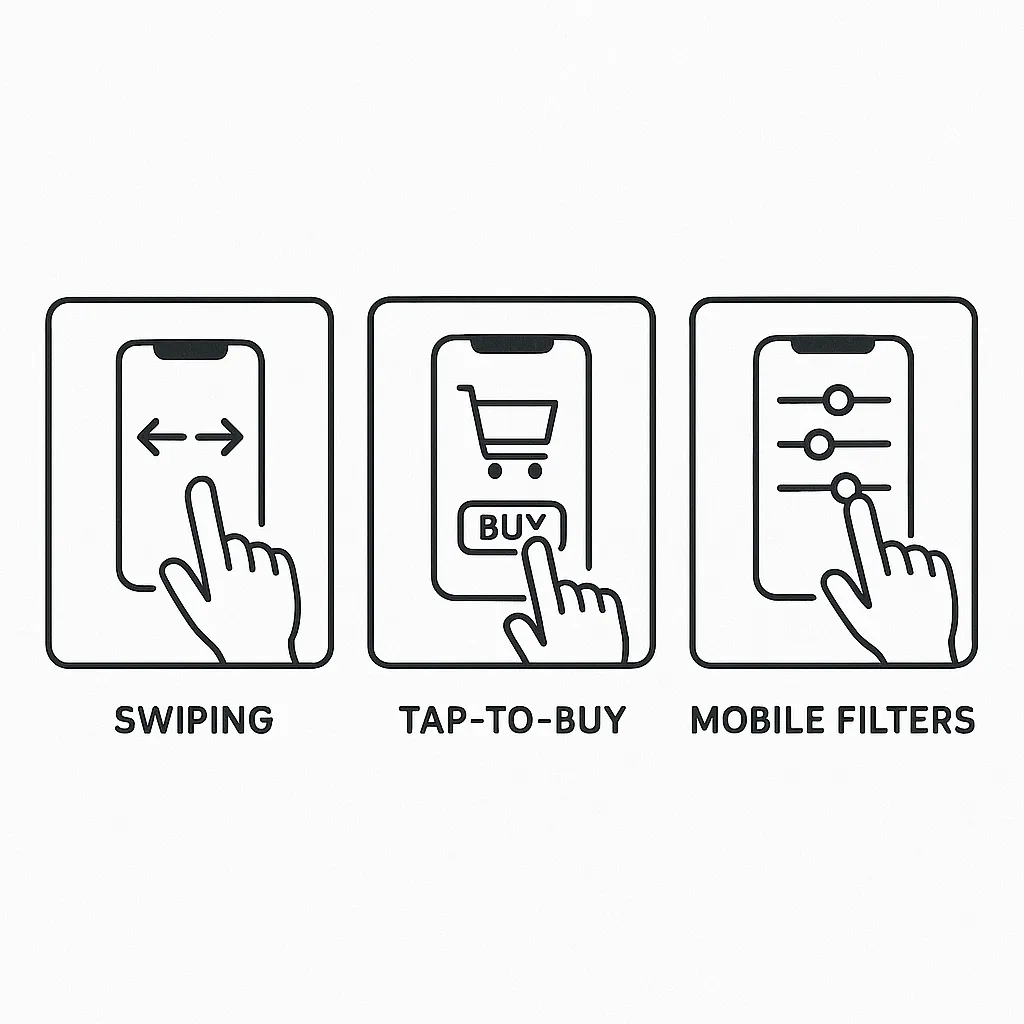
3. Creator Monetization Tools
Etsy lacks Patreon-style support for creators. Why not add:
- Tip jars
- Subscription tiers
- Early access content
4. Inventory Sync Across Channels
Most Etsy sellers also hustle on Instagram or their own Shopify store. Integrate multi-channel inventory sync — that’s gold.
Read more: Best Etsy Clone Scripts in 2025: Features & Pricing Compared
The Seller’s Perspective: What They Actually Want
Let’s not forget: Etsy clone success isn’t just tech — it’s about solving problems real sellers face.
- Lower fees than Etsy’s 6.5% transaction + listing charges
- More customization in storefront design
- Faster payouts and better buyer protections
- Niche audience targeting (Etsy’s too broad now)
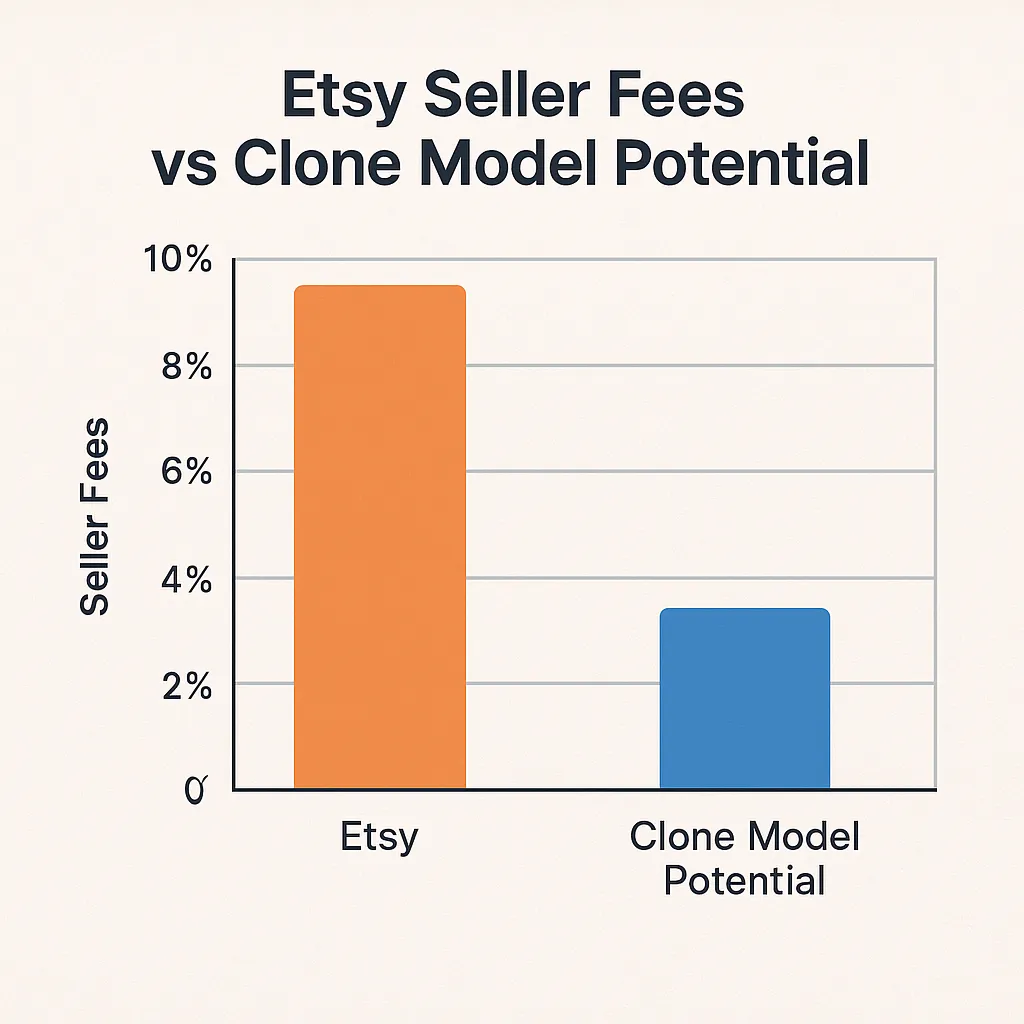
Conclusion
Etsy didn’t just build a platform — it built a movement. But with its scale comes clutter, fees, and a one-size-fits-all vibe that’s turning off creators who want more freedom.
If you’ve got a vision — whether it’s a global craft bazaar or a hyperlocal art market — the blueprint is right in front of you. And you don’t have to build it from scratch.
At Miracuves, we help innovators launch high-performance app clones that are fast, scalable, and monetization-ready. Ready to turn your idea into reality? Let’s build together.
FAQs
Q:1 What’s the most important feature in an Etsy clone?
A robust multi-vendor system with seller dashboards is the backbone. Without it, you’ve just got another online store.
Q:2 Can I include digital downloads in my Etsy clone?
Absolutely! Just like Etsy, your platform should allow secure file delivery upon payment for eBooks, art, templates, and more.
Q:3 How do Etsy sellers promote their products?
Through Etsy Ads, off-site promotions, social sharing buttons, and seasonal discounting. Your clone should mimic and improve on these tools.
Q:4 What tech stack is best for building an Etsy-like app?
MEAN/MERN stacks are popular, but with Miracuves, you get custom recommendations based on scalability and your budget.
Q:5 Does Etsy have a mobile app?
Yes — and it’s crucial. Mobile traffic dominates Etsy usage, so your clone must be mobile-first or even mobile-only to start.
Q:6 How long does it take to build an Etsy clone?
With the right dev partner (cough Miracuves), you can launch an MVP in 8–12 weeks, depending on feature depth and design.
Related Articles:
- How to Build an App Like Flipkart – A Full-Stack Developer’s Guide
- How to Build an App Like Walmart: Full-Stack Developer’s Guide to Clone Development
- Flipkart vs Alibaba Business Model: A Startup Guide
- How to Build an App Like Amazon: Full Developer Guide
- Most Profitable E-commerce Apps to Launch in 2025



